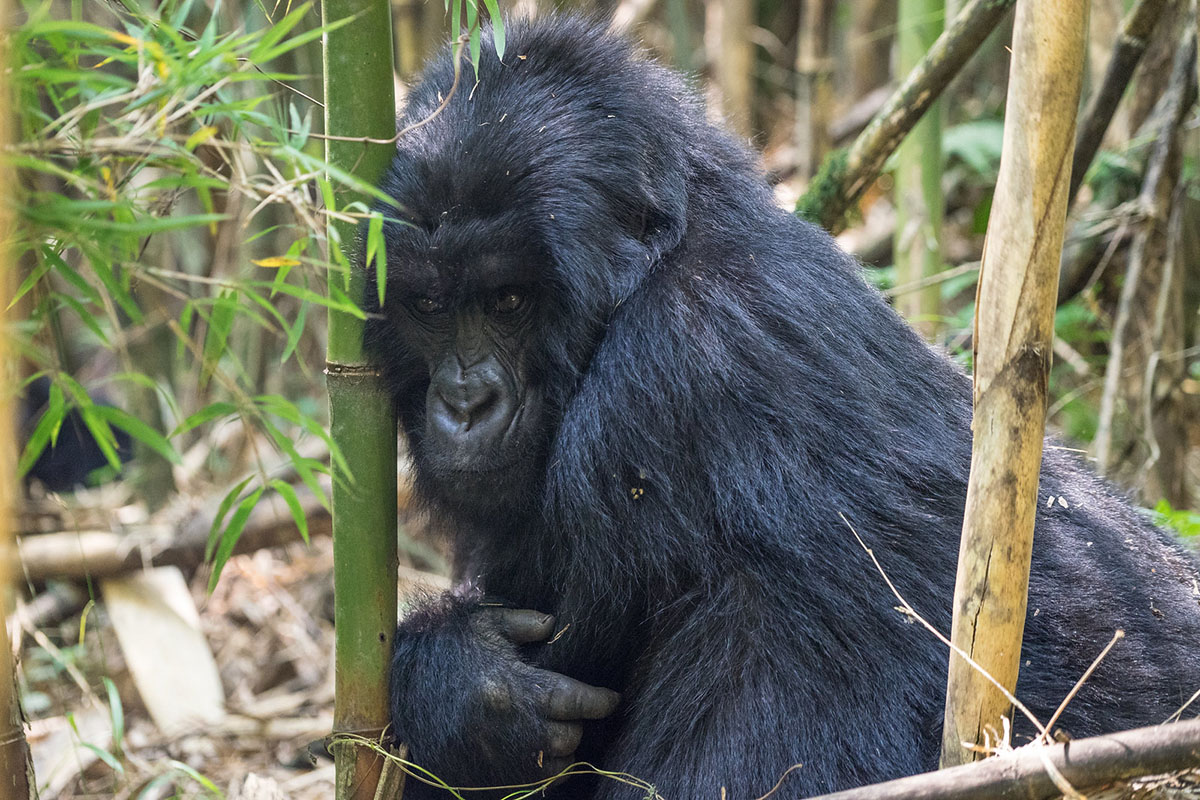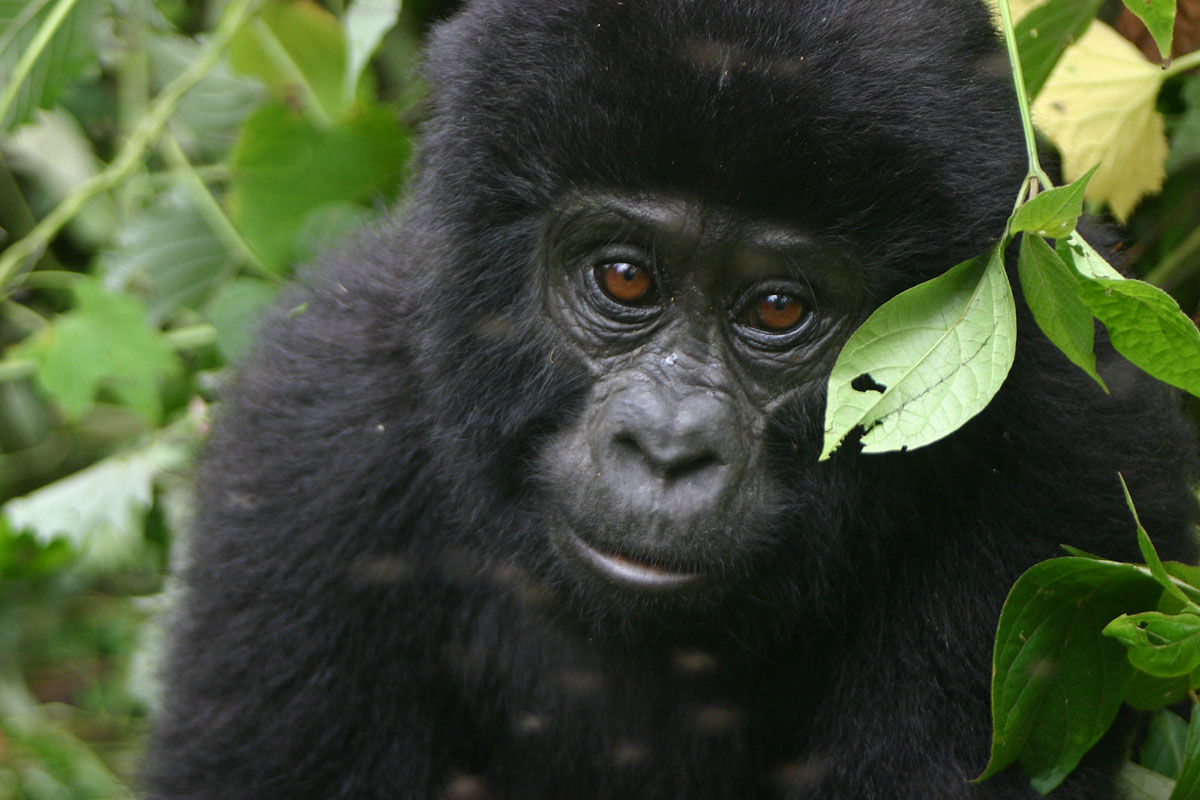
Planning Your Fly-In Safari to Mgahinga Gorilla National Park
October 8, 2024
How to Prepare for Gorilla Trekking in Uganda
October 8, 2024How to Prepare for Gorilla Trekking in Rwanda
If you’re planning a trip to Rwanda for gorilla trekking, you’re in for an unforgettable adventure! This guide, crafted by Excursia Adventures, is designed to help you plan and book your trek successfully. Gorilla trekking is a once-in-a-lifetime experience that draws travelers from around the world, and with a bit of preparation, you can make the most of your safari in Africa. While costs can be high and the journey can be challenging, encountering these magnificent apes in their natural habitat is an experience that shouldn’t be missed.
What is Gorilla Trekking?
Gorilla trekking involves hiking through lush forests to find habituated mountain gorillas in their natural environment. Once you locate them, you’ll enjoy an hour of observation, where you can take photographs and learn about their behaviors and habits. With more than half of the world’s remaining mountain gorillas residing in Uganda and Rwanda, this trek is essential for anyone hoping to see these incredible creatures.
Where to See Mountain Gorillas in Rwanda
In Rwanda, mountain gorillas can only be found in Volcanoes National Park, located in the northwest of the country. This park is home to five of the eight volcanic mountains in the Virunga range, including Karisimbi, Sabyinyo, Gahinga, Bisoke, and Muhabura. It hosts about 380 mountain gorillas and offers access to 10 habituated gorilla families available for trekking.
Which is the Best Country for Gorilla Trekking: Rwanda or Uganda?
Deciding between Rwanda and Uganda for gorilla trekking can be challenging. Many travelers prefer Rwanda for its proximity to Kigali—only a 2-3 hour drive to Volcanoes National Park—making it easier to see the gorillas. Historically, travelers faced longer drives (up to 9-10 hours) from Entebbe, Uganda, to Bwindi. However, with the new tour options that connect travelers through Kigali, you can now reach Bwindi in about 4-5 hours. This allows you to take advantage of the East African Tourist Visa, which enables visits to both countries.
Both countries now allocate gorilla permits by region rather than specific families, making the experience flexible. Uganda’s regions include Buhoma, Ruhija, Rushaga, and Nkuringo. Your choice of gorilla family may depend on your interests and physical fitness. Some families have more silverbacks, while others are known for having many young ones.
Best Parks for Gorilla Trekking in Uganda and Rwanda
Both Bwindi Impenetrable Forest National Park and Mgahinga Gorilla National Park in Uganda, as well as Volcanoes National Park in Rwanda, offer amazing gorilla trekking experiences. The main difference lies in the environment: the gorillas in Mgahinga and Volcanoes National Park are primarily found in bamboo forests, while those in Bwindi inhabit a tropical rainforest with diverse vegetation. Regardless of which park you choose, your chances of seeing gorillas are about 98%.
How to Prepare for Gorilla Trekking in Rwanda
Are you planning a gorilla trekking adventure in Rwanda? This comprehensive guide from Excursia Adventures is designed to help you successfully plan and book your unforgettable experience. Gorilla trekking in Africa is a once-in-a-lifetime opportunity that draws travelers from all over the world. Despite the costs, effort, and occasional discomfort involved in booking and trekking through dense forests, the reward of observing these endangered apes in their natural habitat is an experience that no traveler should miss.
How Long Does Gorilla Trekking Take?
Trekking can take anywhere from 3 to 7 hours, depending on the location of the gorillas, their movements, and the weather conditions. The trek begins at 7:45 AM with a briefing on the do’s and don’ts in the forest. After this briefing, you’ll be assigned a ranger guide who will lead you on your adventure. Once you locate the gorillas, you’ll enjoy a one-hour encounter with them.
How Many Visitors are Allowed to Trek with Each Gorilla Family?
To minimize the risk of disease transmission and behavioral disturbances, only eight people are permitted to visit each gorilla family each day.
What is a Gorilla Trekking Permit?
A gorilla trekking permit is an essential document that allows visitors to trek mountain gorillas in Uganda or Rwanda. It grants access to one hour of direct interaction with the gorillas and is valid for a single day. For multi-day treks, additional permits must be purchased. Each permit comes with a unique booking number that verifies its validity for a specific trekking region.
How Much Does a Gorilla Trekking Permit Cost?
In Uganda, the cost for a gorilla trekking permit is $800 per person for foreign non-residents, $700 for foreign residents, and $75 for East African citizens (from Uganda, Rwanda, Tanzania, Kenya, Burundi, and South Sudan). In Rwanda, the cost is $1,500 for foreign non-residents. The permit allows one hour of interaction with the mountain gorillas in either Bwindi Impenetrable Forest National Park or Mgahinga Gorilla National Park.
What’s Included in a Gorilla Permit?
A gorilla trekking permit includes park entrance fees, the services of park ranger guides, and a contribution towards the conservation of the gorillas’ habitat.
How to Purchase a Gorilla Permit
You can buy gorilla trekking permits directly from the Uganda Wildlife Authority or the Rwanda Development Board. Alternatively, you can book through a reputable tour operator like Excursia Adventures. To ensure a smooth process, check reviews and send an email with your planned trekking dates. The operator will then confirm availability with the relevant authority and assist you with the payment and booking process.
Accessibility for the Elderly and Disabled
Gorilla trekking is accessible to elderly and disabled individuals. For those who may have difficulty walking, sedan chair carriers are available. These chairs are carried by porters to transport individuals to and from the forest. You can arrange to hire a sedan chair either in advance or on the day of your trek, with prices ranging from $400 to $500.
Age Restrictions for Gorilla Trekking
The minimum age for gorilla trekking in Uganda and Rwanda is 15 years. Children under this age are prohibited from trekking due to the unpredictable behavior of younger children, which could disturb the gorillas. Additionally, children are more susceptible to diseases that can be transmitted from gorillas.
The Best Time for Gorilla Trekking
Gorilla trekking is possible year-round, but the ideal months are January, February, March, early April, June, and early September. These months typically see less rainfall, making trekking conditions more favorable and offering clearer visibility of the gorillas. In contrast, April, May, and November often bring heavy rains, which can make trekking uncomfortable.
What to Pack for Gorilla Trekking
When preparing for your gorilla trek, it’s crucial to wear comfortable, durable walking shoes or boots, as the forest can be muddy, especially after rain. Long-sleeve cotton shirts and lightweight long trousers are recommended to protect against undergrowth, stinging nettles, and biting ants. Essential items to pack include:
- Insect repellent
- Torch/flashlight and spare batteries
- Wet wipes
- Water bottle
- Camera with lenses
- Gardening gloves for tracking
- Sandals or flip-flops
- Hat and sunscreen
- Rain jacket
- Sweater or fleece
- Comfortable hiking boots and socks
- Swimwear (if your accommodation has a pool)
- Binoculars for bird watching
Why Book Your Gorilla Trek with Excursia Adventures?
Excursia Adventures offers tailored gorilla trekking experiences in Uganda, Rwanda, and Congo. Our safaris are designed to be eco-friendly and unforgettable, promoting biodiversity, wildlife conservation, and local community upliftment. Alongside gorilla trekking, we offer a range of adventures, including chimpanzee trekking, Big 5 safaris, game viewing, mountain hiking, boat cruises, and cultural encounters. Join us for a memorable African safari experience in renowned destinations such as Tanzania, Kenya, Botswana, and Namibia.




